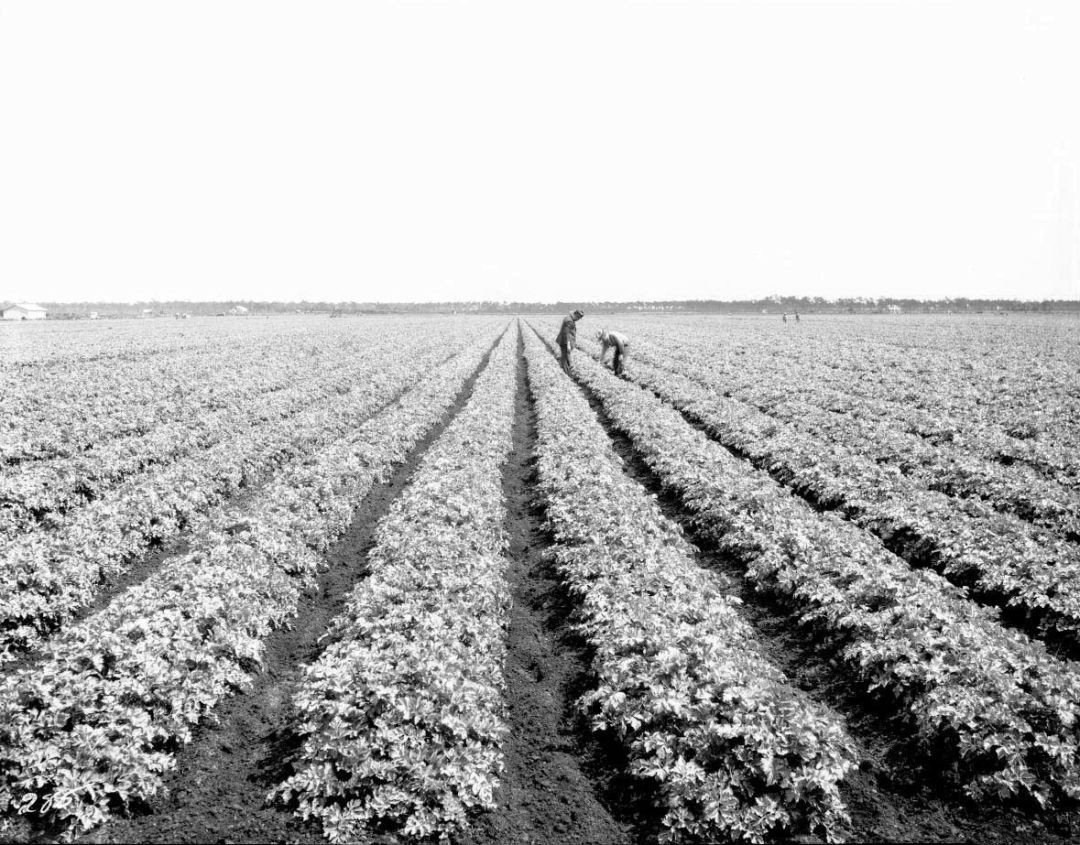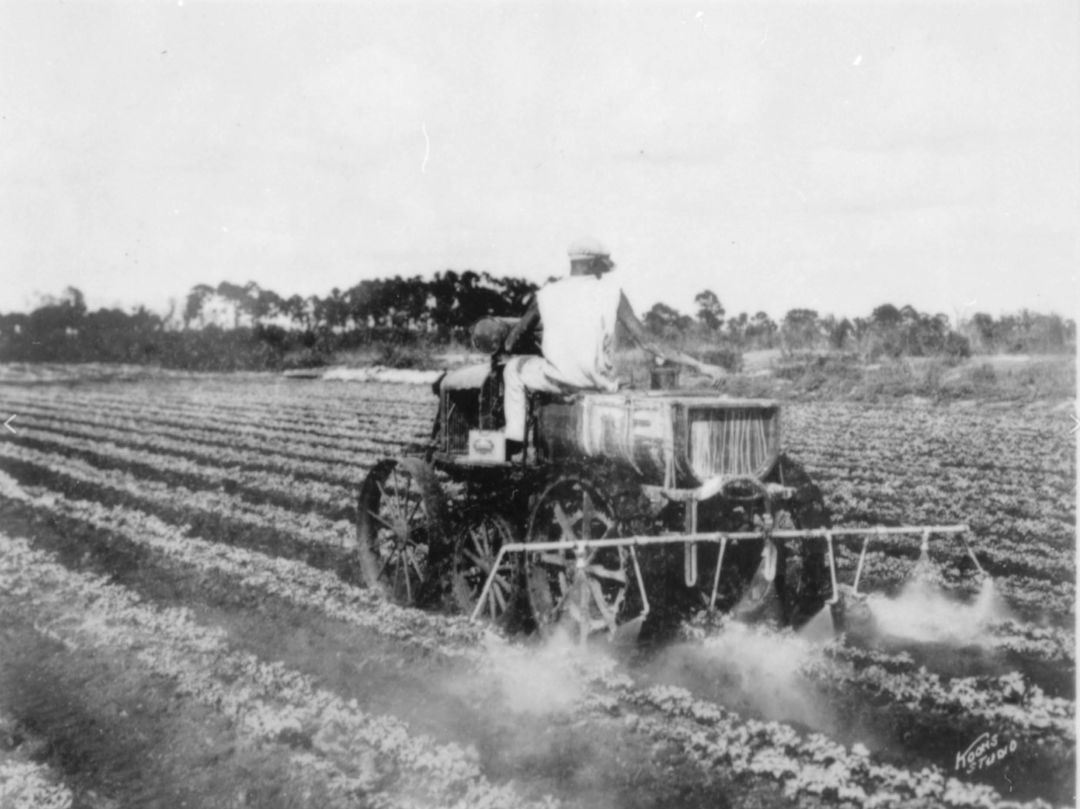A Glimpse Into Sarasota's Rich Agricultural History

In the 1920s, the Celery Fields became the third-largest producer of celery in the state.
Image: State Archives of Florida
Although ranching dominates Sarasota's agricultural output, fruit and vegetable production has been vital to the region's history. The Sunshine State's temperate weather means fields can produce two to three more times a year than their Northern counterparts. It can be challenging; there are the rare freezes and occasional hurricanes to contend with, and in recent years citrus greening, a tree-killing bacteria spread by an insect, has devastated harvests. Here's a peek into how Sarasota's soil has shaped our history and present day.
Agricultural Evolution
Archaeologists have found evidence that suggests indigenous peoples grew bottle gourds, though not for eating. Hollowed and dried, they were used as containers or floats for fishing nets. Centuries later Seminole tribes grew corn, beans, squash and the Seminole pumpkin, a distinct variety. Europeans introduced citrus, papaya and banana.
Frontier Farming
The Scottish settlers who arrived in 1885 were aghast when unusual snow killed crops their first winter, and many left. First settlers, such as William Whitaker in 1842, succeeded in clearing land for planting tomatoes, sugar cane, sweet potatoes, corn, citrus and collard greens.
Cultivation Exploration
Chicago transplant Bertha Palmer and her family saw great produce potential in Sarasota. In the 1920s, after experimenting with strawberries and eggplants, Palmer Farms decided celery was an ideal crop. The acreage, now known as the Celery Fields, became the third-largest producer of celery in the state.

A “muckmobile,” which was outfitted with special wheels and caterpillar-type treads to prevent it from sinking while it fertilized the fields.
Image: Sarasota County Public Works
Sweet Wheels
The Palmers also experimented with farming equipment. After clearing sawgrass and draining terrain, they were left with a rich yet soft soil. They developed a machine dubbed the “muckmobile,” which was outfitted with special wheels and caterpillar-type treads to prevent it from sinking while it fertilized the fields.
Florida Oranges
Brown's Grove, family owned and operated since 1915, is a lasting legacy of Florida's citrus heyday. Located near the eastern end of Fruitville Road, the farm offers U-pick oranges, hayride tours, guest lectures and a citrus museum. Taste its wares at Sarasota's Downtown Farmer's Market.
You Say Tomato
Happy birthday to McClure Family Farms in Manatee County, celebrating its centennial year. The McClures' West Coast Tomato boasts 3,000 acres producing beefsteak and Roma tomatoes shipped nationwide. Planting a quarter-million seeds each week, they harvest approximately 200 million pounds of tomatoes annually.
Fruit Farm
Tropical fruit enthusiast Darryl McCullough raises some 30 varieties of fruit trees on his private organic farm, SweetSong Groves. McCullough grows both classics and exotic varieties such as sabara jaboticabas, jujubes and alano sapodillas. Tours offered first Sundays, October through April for insider tips.
Hay Now
Agricultural census records show that in 2017 there were 292 active farms in Sarasota, 91 percent of them family owned and operated. Of the 71,165 acres of farmland, only 16 percent is used for crops, mainly hay for livestock, sod, oranges and open-range tomatoes.



